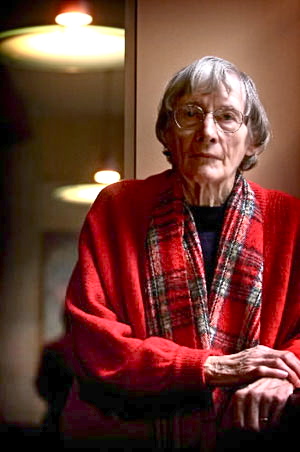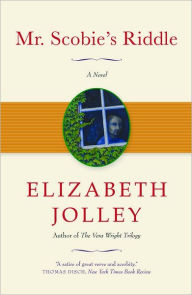“We don’t need to have just one favorite…Our favorite book is always the book that speaks most directly to us at a particular stage in our lives. And our lives change. We have other favorites that give us what we most need at that particular time. But we never lose the old favorites. They’re always with us. We just sort of accumulate them.” — Lloyd Alexander
Like so many others who read voraciously – all kinds of books, from experimental modern fiction to the classics, from thoughtful novels of ideas to thrillers, and from analytical non-fiction to other-worldly fantasy – I have often been asked to name my favorite author, as if it were possible to choose just one. And as Lloyd Alexander points out above, I tend to read according to mood and what appeals at different stages of my life. My all-time favorite books, however, tend to be those which deal with ideas in a unique way, capturing my imagination at the same time that they convey a new slant on a universal theme. If they are also written with a touch of humor, so much the better. Among my long-time, special favorites are several authors who are little known in the United States, authors whose unique work has continually entertained and surprised me, often moving me to tears at the same time that it has left me with a smile on my face.
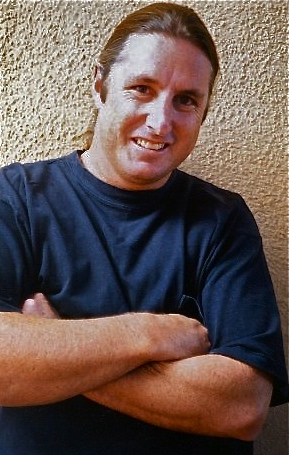
Tim Winton was a student of Elizabeth Jolley at Curtin University on the west coast of Australia. Photo by Denise Fitch.
One such author is Australian author Elizabeth Jolley (1923 – 2007). Born in England, Elizabeth Jolley moved to western Australia with her husband in 1959, raised her children, and in 1976, at the age of fifty-three, finally saw the publication of her first novel. It was not until 1983, when she was sixty, however, that her writing began to receive recognition, and once it did, she experienced non-stop success, with fifteen novels, three short story collections, three plays, and three books of non-fiction, published to great acclaim within twenty-one years. Winner of over a dozen literary prizes and awards including Australia’s prestigious Miles Franklin Award, she was made a member of the Order of Australia for Services to Literature, and in 1997, was declared an Australian Living Treasure. Though she achieved enormous literary recognition, Jolley’s personal life was complicated, but I will save that story until I review her biography.
SEEING THE WORLD THROUGH BOOKS contains reviews of three of Jolley’s novels which show in detail what I like best about her work, and the brief summaries I provide in this present post list these books in my order of preference. All are now available in new editions released by Persea Books. I hope some readers who have never read Jolley will be inspired to do so now.
Mr. Scobie’s Riddle (1983): Martin Scobie, David Hughes, and Fred Privett, all age eighty-five, have just been admitted to the nursing home of St. Christopher and St. Jude following the bizarre crash of their three separate ambulances at the intersection in front of the facility. Admitted for their recuperation, they must share a small single room in which the light switch can only be reached by leaning across one bed. Some furniture has been removed to accommodate the extra beds, and the wardrobe, blocking a window, is inaccessible because of the third bed. Even if they had a view through that window, however, their view would be compromised. “Immediately outside the window was a mass of dusty green foliage of the kind which grows outside kitchens and hotel toilets…The leaves, moving in endless trembling toward and away from one another, gave an impression of trying to speak or to listen but always turning away before any tiny
message could either be given or heard,” a detail emblematic of all life at this nursing home, which specializes in non-communication. As Australian author Elizabeth Jolley develops this relentlessly dark-humored and totally absorbing novel, she also displays enormous talent for developing sensitive character sketches of the sad, elderly patients. Jolley is a world class author, capable of creating serious questions and developing the biggest of the world’s themes within small settings and scenes. The dark ironies help keep the emotion under control, though older readers will feel Mr. Scobie’s frustration with added poignancy.
Miss Peabody’s Inheritance (1984): Elizabeth Jolley’s portraits of elderly characters are unparalleled in their depth and in the sly amusement she brings to their creation. Here she gives life to Dorothy Peabody – or as much life as this quiet, fearful, and unimaginative woman can be said to possess, until that moment in which her life suddenly takes wing through her correspondence with author Diana Hopewell. Jolley also creates additional, vibrant and often surprising characters – other middle-aged single women – who are the protagonists of the new novel-in-progress which author Diana Hopewell shares in her correspondence with Miss Peabody.
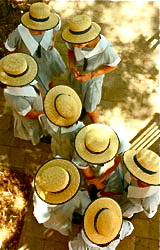
The story within Diana Hopewell’s novel takes place at a polite girls’ school in Western Australia. Photo by Michelle Mossop.
As the point of view moves back and forth between Miss Peabody’s life in Weybridge, outside of London, and Diana Hopewell’s novel-in-progress, which takes place in a polite boarding school in western Australia, Elizabeth Jolley keeps the humor and surprise at a high level, while also commenting on the nature of writing and the role of the novelist. With her wry, often poignant descriptions, and her ability to reveal her characters’ deepest yearnings through subtle and beautifully developed scenes and dialogue, Elizabeth Jolley is a writer of formidable talents and remarkable insights.
Foxybaby (1985): The earlier books that I have read by Australian author Elizabeth Jolley, while a bit more boisterous in some ways than the works of her contemporaries back in England during the period, still seem to fit comfortably into the niche occupied by authors like Beryl Bainbridge, Penelope Lively, Barbara Pym, Muriel Spark, Alice Thomas Ellis, and Jane Gardam, despite Jolley’s unconventional (and some might say outrageous) private life.
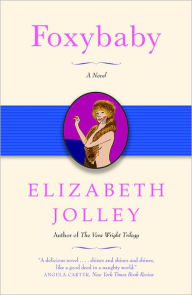 With Foxybaby (1985), which follows Mr. Scobie… (1983) and Miss Peabody… (1984), however, Jolley permanently separates herself from her peers back in England, writing a book in which nothing is sacred. Here her characters, sometimes crazy, usually self-absorbed and unashamedly earthy, are also bawdy. She is realistic, if not enthusiastic, in her depiction of sex in all its variations as salve for the souls of the lonely – and the sometimes bored. Nothing about this book is dainty or subtle. Jolley obviously has great fun here enjoying the freer, more forgiving attitudes of Australia as she creates this over-the-top novel, filled with wild characters who “let it all hang out.”
With Foxybaby (1985), which follows Mr. Scobie… (1983) and Miss Peabody… (1984), however, Jolley permanently separates herself from her peers back in England, writing a book in which nothing is sacred. Here her characters, sometimes crazy, usually self-absorbed and unashamedly earthy, are also bawdy. She is realistic, if not enthusiastic, in her depiction of sex in all its variations as salve for the souls of the lonely – and the sometimes bored. Nothing about this book is dainty or subtle. Jolley obviously has great fun here enjoying the freer, more forgiving attitudes of Australia as she creates this over-the-top novel, filled with wild characters who “let it all hang out.”

Wheatfields for miles were the only scenery for Porch as she traveled west to Trinity College. Photo by MarcoSun
Simultaneously daring and subtle, insightful and bold, sensitive and sometimes sexy, Jolley’s novels are absorbing and satisfying on many levels, and I hope I’ll persuade a few who are unfamiliar with her to take a look at her novels. Sometime soon, I will begin to review the Vera Wright Trilogy, also available from Persea Books, and I expect to review Jolley’s biography, written by her stepdaughter, in the next few weeks.
Photos, in order: The author’s photo by Heath Missen appears on http://www.theage.com.au/
Tim Winton, one of Elizabeth Jolley’s students, has, himself, become an award-winning writer, one of Australia’s best, in recent years. His photo here is by Denise Fitch: http://svc061.wic050p.server-web.com
The photo of a man who might resemble Mr. Scobie is on http://aichberger.de/10E-god.htm
The photo of Australian schoolgirls, by Michelle Mossop, is from http://aichberger.de/
Wheatfields in western Australia, the only scenery for Porch on her travels to Trinity, photo by MarcoSun, are on https://markosun.wordpress.com
